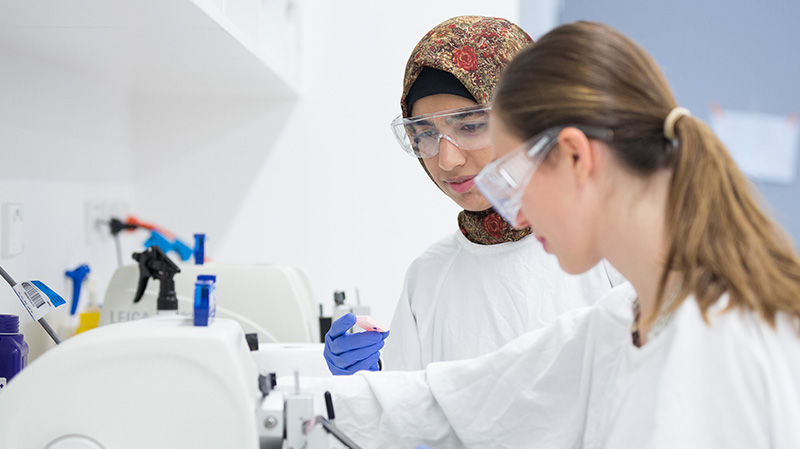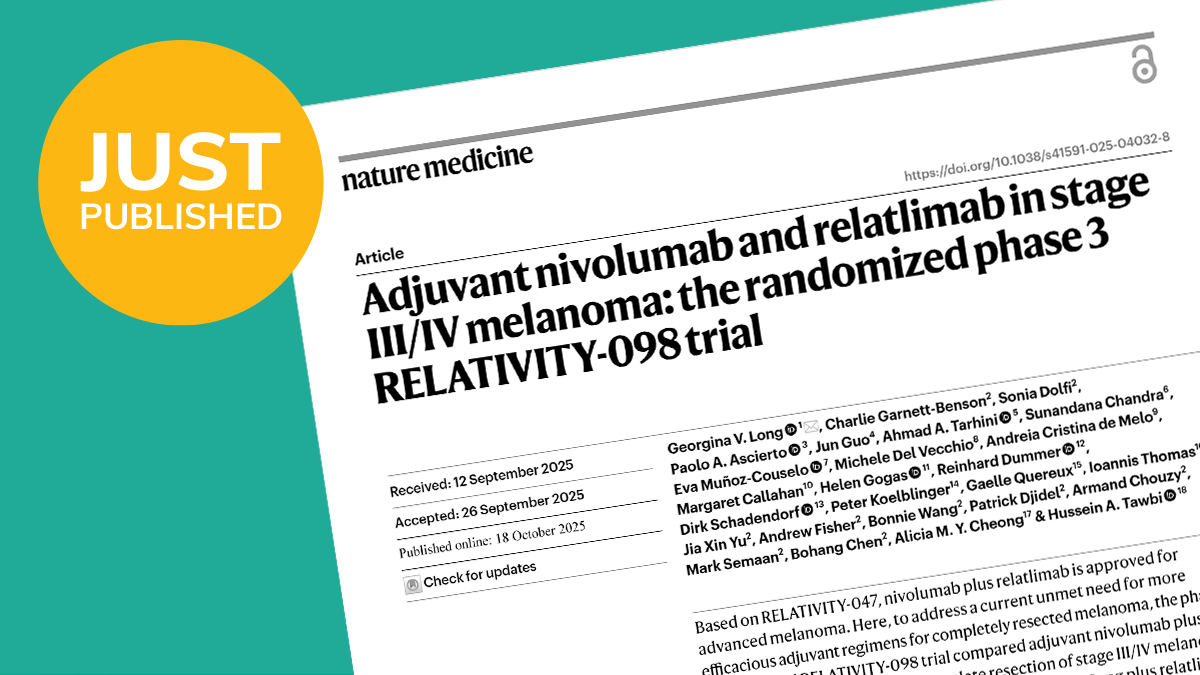Researchers have discovered how melanoma cells are flooded with DNA changes as the disease progresses from an early, treatable stage through to a fatal end stage. The discovery of these dramatic and chaotic genetic changes may be key to developing new treatments for melanoma.
The research, published in Nature Communications, was a collaborative project between Melanoma Institute Australia, Walter and Eliza Hall Institute of Medical Research (WEHI), Peter MacCallum Cancer Centre, Alfred Health and Monash University.
Melanoma is caused by damaging changes occurring in the DNA of skin cells called melanocytes, usually as a result of exposure to ultraviolet (UV) radiation from sunlight. These genetic changes enable uncontrolled growth of the cells, forming a melanoma. As the melanoma cells keep dividing, some accumulate even more DNA changes, helping them to grow even faster and spread.
“While there are excellent new therapies, for some patients this progressing disease is difficult to treat,” said Professor Mark Shackleton, Professor Director of Oncology at Alfred Health and Monash University. “We used DNA sequencing to document genetic changes that occurred as melanomas recurred and progressed in patients.”
Genome sequencing data from donated tumours revealed that, as melanomas progress, they acquire increasingly dramatic genetic changes that build upon the initial DNA damage from UV radiation that caused the melanoma in the first place.
“Early-stage primary melanomas showed changes in their DNA from UV damage – akin to mis-spelt words in a book. These changes were enough to allow the melanoma cells to grow uncontrollably in the skin,” said Professor Tony Papenfuss who leads WEHI’s Computational Biology Theme and co-heads the Computational Cancer Biology Program at Peter MacCallum Cancer Centre.
“In contrast, end-stage, highly aggressive melanomas, in addition to maintaining most of the original DNA damage, accumulated even more dramatic genetic changes. Every patient had melanoma cells in which the total amount of DNA had doubled – a very unusual phenomenon not seen in normal cells – but on top of that, large segments of DNA were rearranged or lost – like jumbled or missing pages in a book. We think this deluge of DNA changes ‘supercharged’ the genes that were driving the cancer, making the disease more aggressive.
“The genomes in the late-stage melanomas were completely chaotic. We think these mutations occur in a sudden, huge wave, distinct from the gradual DNA changes that accumulate from UV exposure in earlier-stage melanomas. The melanoma cells that acquire these chaotic changes seem to overwhelm the earlier, less-abnormal, slower growing cells,” Professor Papenfuss said.
“These genetic changes have the potential to interact and ‘help’ each other in order to promote progression, adding a layer of complexity to this already chaotic scenario”, said first author Dr Ismael Vergara, computational biologist at MIA, WEHI and Peter Mac.
“Now that we know what the DNA of lethal melanoma looks like, we can search for these patterns in the melanomas of patients and evaluate their value in predicting recurrence and response to therapies.”
This story was originally published by WEHI.
Publication: Vergara, I.A., Mintoff, C.P., Sandhu, S. et al. Evolution of late-stage metastatic melanoma is dominated by aneuploidy and whole genome doubling. Nat Commun 12, 1434 (2021).





